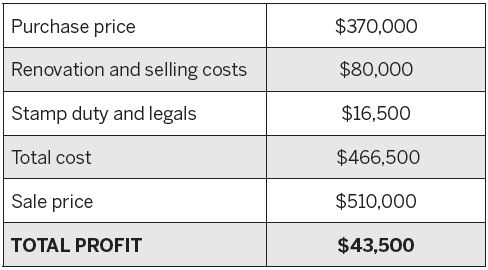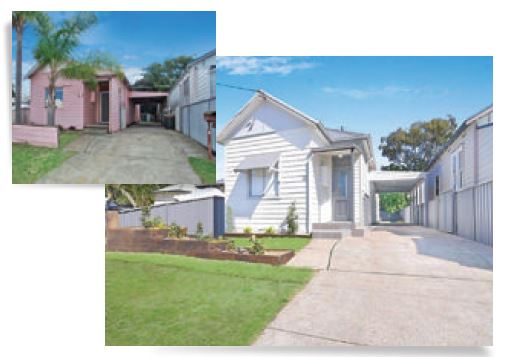The Australian property market is very diverse, with a number of micro markets operating at any one time. As a result, it is little surprise that there is no ‘one size fits all’ renovating strategy that can work for every investor, in every situation, without fail.
“Instead of looking for a one-size-fits-all strategy, and to account for this diverse property landscape, I like to apply a formula to my renovations,” explains Naomi Findlay, CEO of Silk Home and the principal and founder of the International Institute of Home Staging.
“Using a formula means the variables specific to the location, property and price point can be accounted for. This results in a renovation plan that will provide the best chance of returning the greatest profit from a project.”
To demonstrate how this works in action, Findlay shares the details of a property project she worked on in Newcastle, NSW.
“This is a great example of there being multiple options to take into consideration for the renovation plan, and the challenge was to determine the sweet spot where the profit from the project would be the greatest,” she says.
“The property would have originally been a gun barrel miner’s cottage that serviced this industrial town’s steel city workforce in the early 1900s. I find these properties are such a joy to work on as they have so many redeeming features that buyers on resale are so keen to secure.”
Assessing renovation potential
When the property was purchased for $370,000, it came with the following attributes:
• Run-down exterior
• No outdoor living space
• An un-level and broken slab, and a poorly built awning
• Fences and yards that were highly neglected
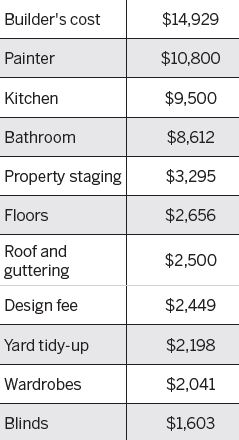
This property was visually transformed and the end result was spectacular. These results were achieved without spending a
small fortune.
“When renovating for a profit, the numbers need to speak loudly,” Findlay says. “Documenting every detail of the budget and analysing it during and at the completion of the project is an essential step to the success of a renovation.”
In this case, the total renovation spend was around $61,000, and other costs, including property insurance, selling commission and fees, holding costs and pest inspections, came to around $19,000.
Of the $61,000 renovation budget, the major costs were as shown in the table.
THE NUMBERS
RENOVATION PLAN

• A kitchen with virtually no pantry storage
• Awkward spaces to furnish and live in
• A combined laundry and bathroom, with a shower over a bath
Run your formula for different game plans
“The first step in the renovation was to find the sweet spot in the renovation plan that would yield the greatest potential return on money invested. To do this I ran three renovation plans through my formula,” Findlay says.
“Styling was the secret weapon as it showed buyers how to live in the property”
Crunching the numbers
For each of the renovation plans(see table), Findlay calculated the following:
• Renovation costs (RC)
• Hold costs and associated fees and duties (HC)
• Post-renovation sale price or value (SP)
Then, using the buy price (BP), the potential profit for each of the renovation plans could be calculated by simply working in the numbers:
SP – BP – RC – HC = POTENTIAL RETURN
The results of applying this formula to each of the three scenarios indicated that the highest potential for maximising profit or return on investment would be achieved using Scenario 2. Let’s have a look at the results achieved!
Improving street appeal
“The street appeal of a property is often one of the areas where you can add significant value. As you can see, the overall change to the street appeal of this property is dramatic. Replacing the front fence with a more traditional terraced garden bed and including cottage-style plants softened the facade, while spray-painting the fences in one colour, combined with painting the property with a light and fresh palette, instantly increased its street presence and perceived value.”
Creating flow and harmony
“My first impression of the inside of this property was that it was the classic ‘box of Smarties’; it featured strong, dated and extremely polarising colours. The floors varied throughout and in some areas the amazing original boards had been covered over by out-of-date, damaged cork flooring. When faced with multiple flooring types and varied subfloor materials, in my opinion it is best to go over the top. In this project an engineered timber floor was laid over the top of the existing floor to provide flow, harmony and to make the spaces feel larger.”
Using modern lighting
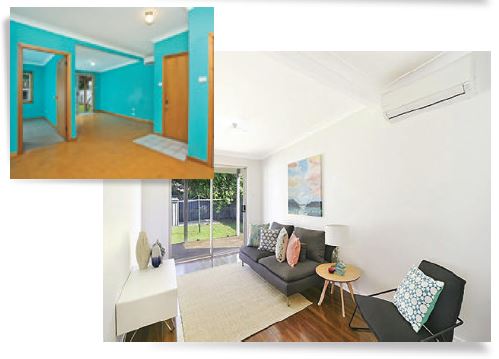
Overhauling the kitchen
“I cannot emphasise enough that if the kitchen is not highly functional and well presented, it can also be a property’s biggest liability! This kitchen had very little storage, a free-standing oven, no rangehood, and no fridge space … the list could go on and on. To keep costs to a minimum, the plumbing and electrical locations remained in the original position 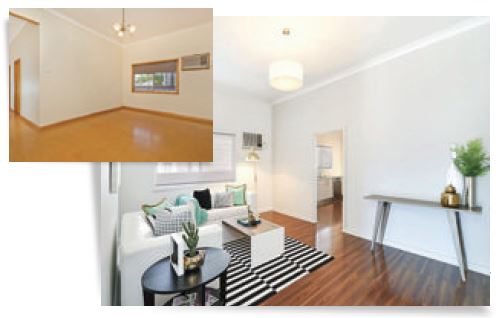
“I cannot emphasis enough that if the kitchen is not highly functional and well presented, it can also be a property’s biggest liability”
Fresh new bathroom
“The bathroom layout stayed largely unchanged; however, we optimised the space by moving the shower tapware towards the bathroom door so a wet room could be installed instead of having the shower over the bath. Prior to the renovation, the 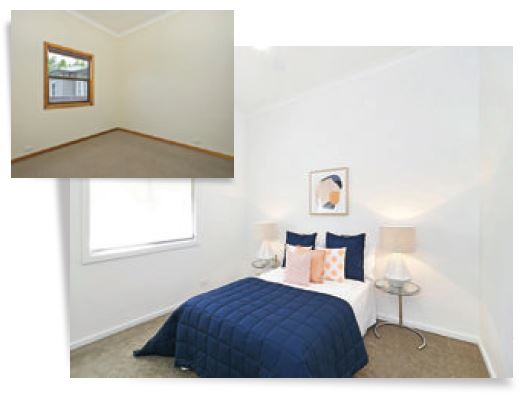
A final boost: home staging and styling
“It’s my experience that staging and styling a home for sale can increase the sale price by 10%, on average, and is especially important in a property like this one, that presented a challenging floor plan. Styling this project was imperative as the renovation plan did not allow for any floor plan changes. Hence, styling was the secret weapon as it showed buyers how to live in the property within seconds of inspecting each space.”
